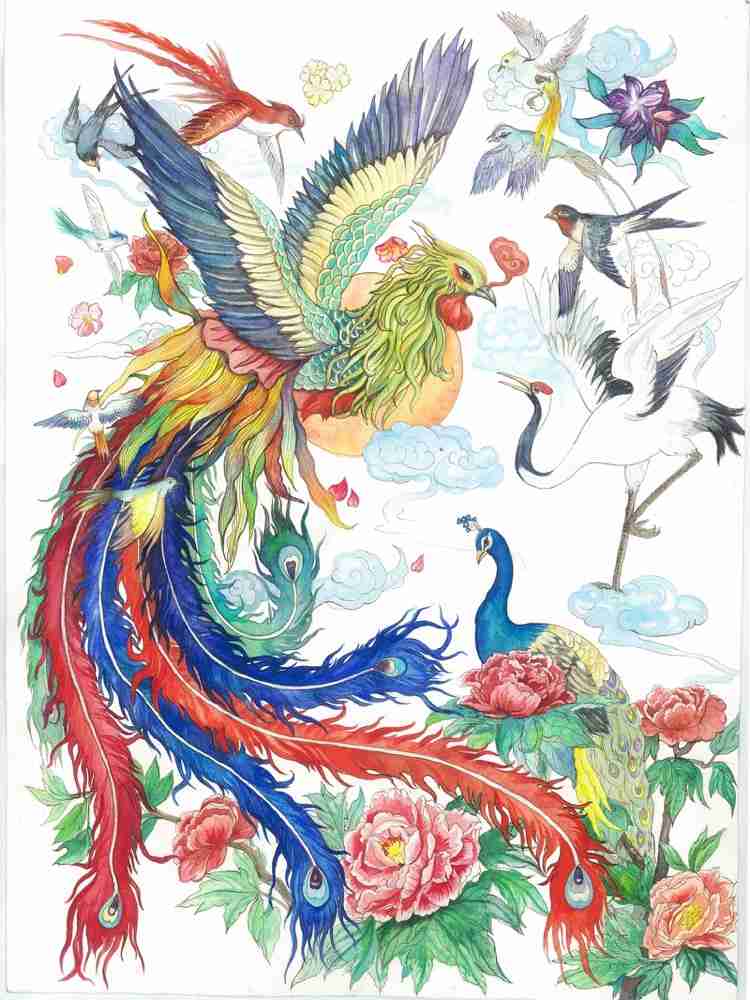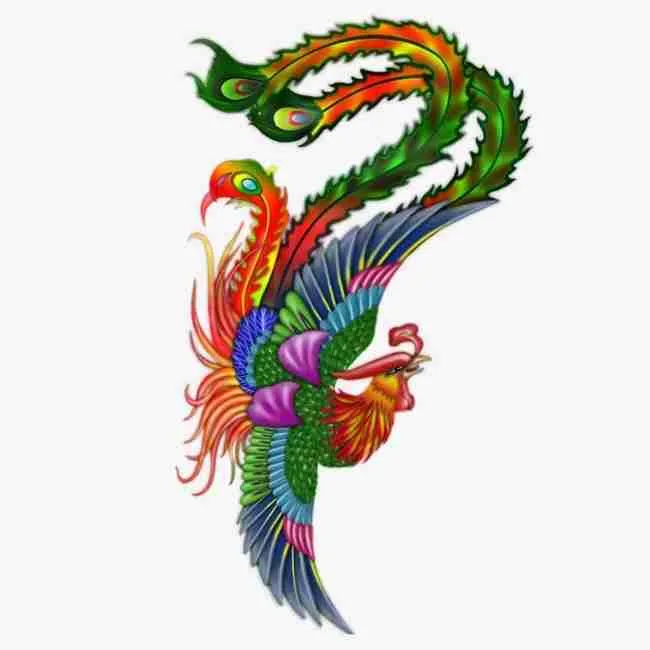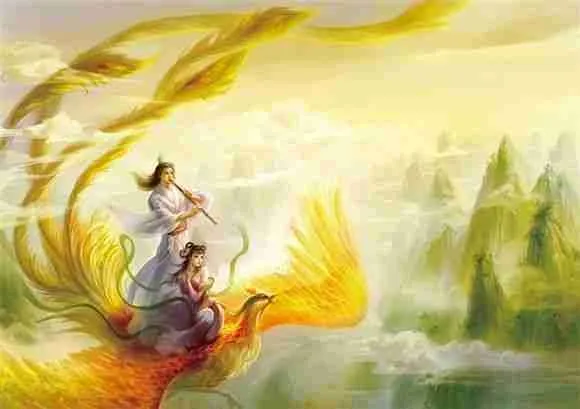Fenghuang is a mystical creature in Chinese mythology. Like the dragon, it is revered and holds a lot of importance in Chinese culture. You’ll probably see it referenced in a lot of Chinese literature and incorporated into some of the architecture. There are also paintings and other artifacts that depict the Fenghuang.
To fully understand what the relationship is between the Fenghuang and the Chinese, in this post, we will be taking an in-depth look into the mystical creature. We will first look at what it is, and how it looks like. Then we will cover what it symbolizes and what it means in Chinese culture.
What Is a Chinese Phoenix?

The Chinese phoenix is what is known as the Fenghuang. It is a mystical bird, that according to Chinese mythology, is the ruler over all other birds. It is as much, revered and respected as the dragon is in Chinese culture. There is even a county in the Hunan province named after the bird. It is believed that the Fenghuang used to come flying from that city.
Although it is depicted as one creature, originally Fenghuang was both male and female. The males were called Feng and the females were called Huang. Over time, however, the differences were blurred and it was now majorly considered as a female entity. It is paired with the dragon that’s considered majorly masculine as well. The two are said to make a powerful pair with deep meaning and symbolism. Both of them along with the Tiger and turtle are considered the four important creatures in China.
what is the history of fenghuang?
No one knows the exact date when the Chinese phoenix first appeared. It is, however, said to be present during the Yellow Emperor’s death, the first Emperor of the imperial dynasties period. Unlike the western depiction of the phoenix, the Chinese phoenix is immortal. It is said to live high up in the Wu t’ung tree in the K’unlan mountains, where it is inaccessible to humans. It is a very peaceful bird that doesn’t kill or cause any harm to humans or animals. It also doesn’t destroy plants and nature unnecessarily. The Fenghuang is said to only feed on a diet of bamboo seeds and clear and pure spring water. During war or trouble times, the mystical bird is said to fly to heaven and returns only when there is peace or harmonious times ahead.
It is attracted to music. The Fenghuang is praised for its melody and believed to sing in the five Chinese harmonic tones. Its singing is said to have been what inspired the Chinese harmonic scale. Legend has it that if a musician plays his/her music under the Wu t’ung tree then their music would be blessed.
What Does a Chinese Phoenix Look Like?

The Chinese phoenix is considered a graceful bird and a true representation of what beauty is. Like the dragon, Fenghuang is said to be an embodiment of many different birds. Over the years its appearance seemed to have evolved according to people’s description of it.
Initially, Fenghuang was described as having the face of a swallow and beak of a rooster. It had a snake’s neck, breasts that were said to be similar to a goose’s and it had a back similar to a tortoise’s. Its legs resembled that of a horse and a tail that was similar to a fish. Today, it is said to have a golden pheasant’s head, a mandarin duck‘s body, a parrot’s beak, a peacock’s tail, a crane’s legs, and a swallow’s wings. Its feathers and body are colored in four main colors, that is red, white, black, green, and yellow.
What Does the Chinese Phoenix Symbolize?
The Chinese phoenix holds a lot of meaning and represents a lot. To begin with, it is seen as a sign of good luck and power. It is also often associated with harmony. Although it’s rarely seen among humans, when it does appear, it is seen as a good omen representing good times ahead.
The body of the Fenghuang also holds a lot of symbolism. To begin with, the five colors on its body are said to represent the five Chinese virtues. That is decorum, charity, loyalty, honesty, and justice. Its different body parts are said to represent the different celestial bodies as well. The sun is said to be its eyes, and the moon is its back. Its head is said to be the sky, and the wind is its wings. At its feet is said to represent the earth and the planets are its tail.
What Does Phoenix Mean in Chinese Culture?

In Chinese culture, the Fenghuang holds a very important position. It’s is normally associated with power, purity, harmony, and good fortune. Its male and female counterparts, Feng and Huang, together were seen as the manifestation of the Yin and Yang symbol of balance. Feng represented the male active energy, the yin, and the Huang represented the female passive energy, the yang. In more recent times, when the Fenghuang began being considered as largely a female entity, it stands for the yang feminine energy, while the dragon stands for the yin masculine energy. The pair is believed to be the ultimate symbol of love and true soulmates, who bring about happiness to a married couple.
Given the paring, in Ancient China, while the dragon was the symbol of the emperor, the Chinese phoenix was the symbol used to represent the empress. Most of the depictions at the time were of the dragon chasing after the phoenix. As long as the empress wore the robe embraided with the phoenix, no one could accuse her of being impure, corrupt, or unjust. Also, after the phoenix was seen during the yellow emperor’s death, it began to be seen as a symbol of a new era that brought good times. Since it is associated with peace and justice, whenever it appeared during the inauguration of a new emperor, he was said to be a just and true leader.
Today, families that hang up the phoenix in the houses or at their doors are seen as noble and virtuous people. They also believe that owning phoenix-engraved items is a source of good luck and a way of keeping away trouble or an evil eye.
Conclusion.
The Chinese phoenix plays an important role in Chinese culture. So much that it has even been incorporated into the countries cuisine, where it represents poultry dishes like chicken, turkey, and duck. Although its origin isn’t clear, the Chinese have believed and revered this bird for many centuries and continue to do so even today.